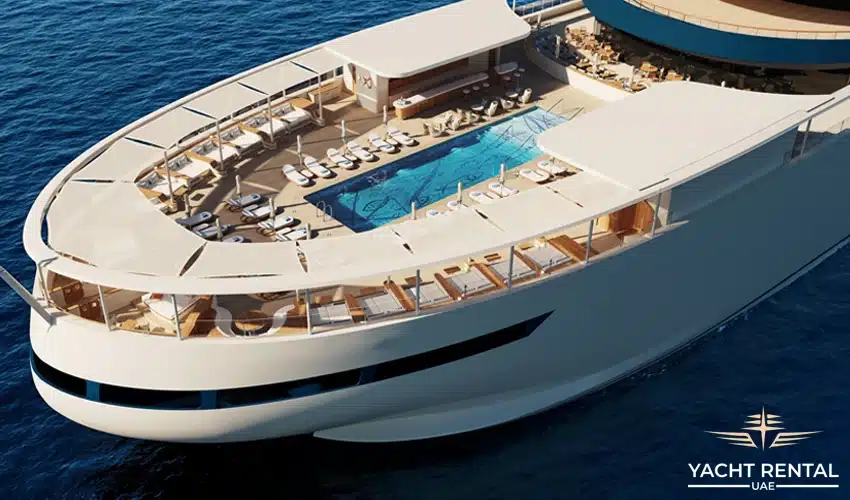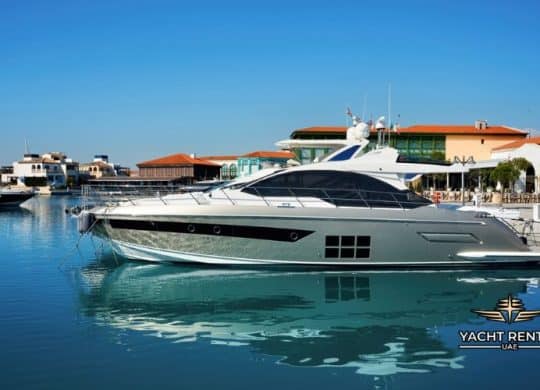Difference Between Yacht and Ship
Understanding the distinction between a yacht and a ship is crucial for those interested in chartering a yacht for leisure. Yachts prioritize luxury personalized service and are typically smaller, while ships focus on transportation and commercial activities. So, this distinction ensures charterers select a vessel that aligns with their desired experience and expectations. Let’s differentiate these two based on the following:
- Size and Dimensions
- Function and Purpose
- Design and Features
- Legal Classification
Size and Dimensions
| Vessel Type | Category | Size Range (feet) | Size Range (meters) |
| Yacht | Day Sailer | < 30 | < 9 |
| Yacht | Cruising Yacht | 30-60 | 9-18 |
| Yacht | Luxury Yacht | > 60 | > 18 |
| Yacht | Superyacht | > 200 | > 60 |
| Yacht | Mega Yacht | > 400 | > 120 |
| Ship | Container Ship | Up to 1,300 | Up to 400 |
| Ship | Oil Tanker | Varies, some > 1,000 | Varies, some > 300 |
| Ship | Bulk Carrier | Similar to Oil Tankers | Similar to Oil Tankers |
| Ship | Cruise Ship | Varies, some > 1,000 | Varies, some > 300 |
Yachts are classified into several categories based on their size. Day sailers are typically under 30 feet (9 meters), while cruising yachts range from 30 to 60 feet (9 to 18 meters). Luxury yachts exceed 60 feet (18 meters) and encompass subtypes like motor and sailing yachts. The larger categories include superyachts, which are over 200 feet (60 meters), and mega yachts, the largest yachts often exceeding 400 feet (120 meters).
Ships also vary significantly in size depending on their type and purpose. Container ships can reach up to 1,300 feet (400 meters) in length, while oil tankers and bulk carriers vary, with some exceeding 1,000 feet (300 meters). Cruise ships also vary in length, with some reaching 1,000 feet (300 meters). Naval ships have diverse sizes depending on their role, ranging from smaller frigates to large aircraft carriers.
Function and Purpose
Yachts cater to leisure and luxury, functioning as floating resorts, private getaways, or platforms for recreational activities like diving and fishing. They may also serve as venues for events or charters, offering personalized itineraries and experiences.
Read: How Far Can a Yacht Travel
Ships, on the other hand, are workhorses of the seas, fulfilling diverse functions depending on their type. Cargo ships transport goods across vast distances, tankers carry oil and gas, while cruise ships offer voyages for leisure and tourism. Military ships protect nations and project power, while research vessels explore and study the oceans.
Design and Features
Due to their differing purposes, yachts and ships exhibit distinct designs, features, and characteristics. Yachts prioritize aesthetics, luxury, and comfort. Their design emphasizes sleek lines, elegant interiors, and spacious living areas, often incorporating amenities like swimming pools, Jacuzzis, helipads, and entertainment systems. Yacht layouts prioritize privacy and relaxation, with multiple cabins, en-suite bathrooms, and personalized services.
Ships focus on functionality and practicality. Their design is driven by efficiency, cargo capacity, or passenger accommodations. Ship layouts are optimized for specific tasks, featuring large cargo holds, passenger decks, or specialized equipment for industrial or military operations.
A yacht can resemble a ship regarding certain features, such as size or amenities like helipads or multiple decks. However, the distinction lies in their core purpose. Even with ship-like features, a vessel primarily designed for leisure and personal use is still categorized as a yacht.
Read: Difference Between Yacht and Cruise: Which is Right for You
Final Words About Yacht Becoming a Ship
The distinction between yachts and ships lies in their purpose, design, and legal classification. While both can share similar features like size and amenities, yachts primarily cater to leisure and luxury, while ships serve commercial, industrial, or military functions.







